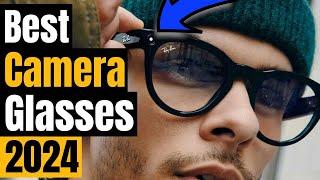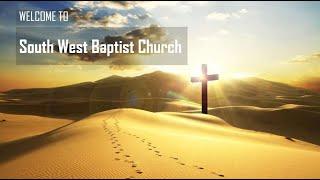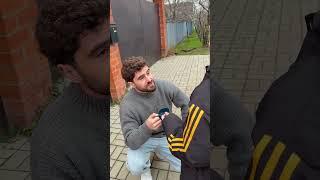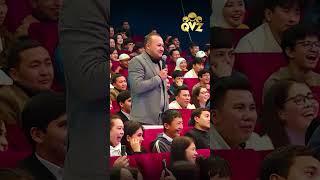
Is Francis Ford Coppola the Most Fearless Director in Hollywood?
Francis Ford Coppola Directing Style — We look at the enigmatic and revered filmmaker Francis Ford Coppola, and what makes him so different from anyone else.
Francis Ford Coppola Movies Ranked ►► https://bit.ly/ds-fa
StudioBinder Blog ►► http://bit.ly/sb-bl
─────────────────────
Special thanks to:
Dan Fogarty ►► https://bit.ly/4dbw0tL
Mina Rios ►► https://bit.ly/3XURBSR
─────────────────────
Chapters:
00:00 - Introduction to the work of Francis Ford Coppola
01:10 - The History of Francis Ford Coppola Filmmaking
02:49 - The Godfather
05:30 - The Conversation
07:46 - The Godfather Part II
09:57 - Apocalypse Now
13:13 - One From The Heart
15:17 - Bram Stoker's Dracula
17:53 - Megalopolis
18:14 - Takeaways
─────────────────────
FRANCIS FORD COPPOLA FILMMAKING
Very few people would dispute that Francis Ford Coppola has made some of the most important movies of the 20th century. And yet, Coppola's career has been anything but smooth sailing. Despite his massive success early on, he has hit rough patches that are about as rough a patch as a career can hit. In our research, we've found that what makes Coppola so great is also what makes him a financial liability: he is never afraid to take a risk.
FRANCIS FORD COPPOLA CINEMATOGRAPHY
In *The Godfather* (1972), Coppola took significant risks with cinematography, particularly in the way he collaborated with director of photography Gordon Willis. Known as "The Prince of Darkness," Willis employed an unconventional use of shadows and dim lighting to create a haunting and operatic visual tone. Many scenes, especially in the interiors, are underlit, defying Hollywood norms of brightly lit characters and settings.
FRANCIS FORD COPPOLA SOUND DESIGN
With *The Conversation* (1974), Coppola turned his attention to sound, pushing the boundaries of what sound design could achieve in film. The film's central theme revolves around audio surveillance, and Coppola made the risky choice to immerse the audience in the protagonist’s experience through experimental use of sound.
THE GODFATHER PART II STORY STRUCTURE
*The Godfather Part II* (1974) further demonstrated Coppola’s willingness to break conventional rules, especially in terms of story structure. The film's nonlinear narrative, cutting between the rise of young Vito Corleone and the corruption of his son Michael, was a bold departure from the linear storytelling common in Hollywood.
FRANCIS FORD COPPOLA EDITING
In *Apocalypse Now* (1979), Coppola’s risk-taking extended to editing. The production itself was notoriously chaotic, but the editing process, led by Walter Murch, was a particular gamble. Coppola allowed the film’s pacing and structure to become dreamlike and fragmented.
THE BLUNDER OF COPPOLA FILMS
The production of *One from the Heart* (1981) stands as one of Coppola’s biggest risks. Shot entirely on soundstages with extravagant sets and heavy use of rear-projection, it was an artistic experiment that aimed to blur the lines between theater and cinema.
DRACULA AND A RETURN TO FORM
Finally, in *Bram Stoker's Dracula* (1992), Coppola took a major gamble with special effects. Instead of relying on the burgeoning field of digital effects, he committed to in-camera techniques. This meant employing miniatures, rear-projection, and trick photography to create a stylized, expressionistic horror aesthetic.
#FilmTheory #VideoEssay #Filmmaking
─────────────────────
♬ SONGS USED:
"The End" - The Doors
"Love Theme From The Godfather" - Nino Rota
"Bamboo Forest" - Rhythm Scott
"Wall of Fire" - Tony Anderson
"Climb Back Up" - idokay
"Jazz Club" - Rudiments
"The Godfather - Waltz" - Nino Rota
"Halo" - Tony Anderson
"Dark Blood" - Jimmy Svensson
"The New Godfather" - Nino Rota
"A Battle in the East" - Rhythm Scott
"Theme From 'The Conversation'" - David Shire
"The End Of The Day" - David Shire
"Symetrics" - Will Patterson
"Life's Journey Begins" - idokay
"Main Title - The Immigrant" - Nino Rota
"British News Team" - Lance Conrad
"Vito And Abbandando" - Nino Rota
"Ride of The Valkyries" - Richard Wagner
"Curiosity" - Kevin Graham
"Assembly Line Dreams" - Ostin Drais
"Neon Sun" - Jacob Montague
"Do Lung" - Carmine Coppola, Richard Beggs, Darice Ellis
"Clockwork" - Hans Johnson
"Instrumental Montage (The Tango / Circus Girl)" - Tom Waits
"The Night Train" - Lee's Blues
"Dracula - The Beginning" - Wojciech Kilar
"Vampire Hunters" - Wojciech Kilar
"All Star" - ANBR
"Renegade" - Notize
Music by Artlist ► https://utm.io/umJx
Music by Soundstripe ► http://bit.ly/2IXwomF
─────────────────────
SUBSCRIBE to StudioBinder’s YouTube channel! ►► http://bit.ly/2hksYO0
Looking for a production management solution for your film? Try StudioBinder for FREE today: https://studiobinder.com/pricing
— Join us on Social Media! —
Instagram ►► https://www.instagram.com/studiobinder
Facebook ►► https://www.facebook.com/studiobinderapp
Twitter ►► https://www.twitter.com/studiobinder
Francis Ford Coppola Movies Ranked ►► https://bit.ly/ds-fa
StudioBinder Blog ►► http://bit.ly/sb-bl
─────────────────────
Special thanks to:
Dan Fogarty ►► https://bit.ly/4dbw0tL
Mina Rios ►► https://bit.ly/3XURBSR
─────────────────────
Chapters:
00:00 - Introduction to the work of Francis Ford Coppola
01:10 - The History of Francis Ford Coppola Filmmaking
02:49 - The Godfather
05:30 - The Conversation
07:46 - The Godfather Part II
09:57 - Apocalypse Now
13:13 - One From The Heart
15:17 - Bram Stoker's Dracula
17:53 - Megalopolis
18:14 - Takeaways
─────────────────────
FRANCIS FORD COPPOLA FILMMAKING
Very few people would dispute that Francis Ford Coppola has made some of the most important movies of the 20th century. And yet, Coppola's career has been anything but smooth sailing. Despite his massive success early on, he has hit rough patches that are about as rough a patch as a career can hit. In our research, we've found that what makes Coppola so great is also what makes him a financial liability: he is never afraid to take a risk.
FRANCIS FORD COPPOLA CINEMATOGRAPHY
In *The Godfather* (1972), Coppola took significant risks with cinematography, particularly in the way he collaborated with director of photography Gordon Willis. Known as "The Prince of Darkness," Willis employed an unconventional use of shadows and dim lighting to create a haunting and operatic visual tone. Many scenes, especially in the interiors, are underlit, defying Hollywood norms of brightly lit characters and settings.
FRANCIS FORD COPPOLA SOUND DESIGN
With *The Conversation* (1974), Coppola turned his attention to sound, pushing the boundaries of what sound design could achieve in film. The film's central theme revolves around audio surveillance, and Coppola made the risky choice to immerse the audience in the protagonist’s experience through experimental use of sound.
THE GODFATHER PART II STORY STRUCTURE
*The Godfather Part II* (1974) further demonstrated Coppola’s willingness to break conventional rules, especially in terms of story structure. The film's nonlinear narrative, cutting between the rise of young Vito Corleone and the corruption of his son Michael, was a bold departure from the linear storytelling common in Hollywood.
FRANCIS FORD COPPOLA EDITING
In *Apocalypse Now* (1979), Coppola’s risk-taking extended to editing. The production itself was notoriously chaotic, but the editing process, led by Walter Murch, was a particular gamble. Coppola allowed the film’s pacing and structure to become dreamlike and fragmented.
THE BLUNDER OF COPPOLA FILMS
The production of *One from the Heart* (1981) stands as one of Coppola’s biggest risks. Shot entirely on soundstages with extravagant sets and heavy use of rear-projection, it was an artistic experiment that aimed to blur the lines between theater and cinema.
DRACULA AND A RETURN TO FORM
Finally, in *Bram Stoker's Dracula* (1992), Coppola took a major gamble with special effects. Instead of relying on the burgeoning field of digital effects, he committed to in-camera techniques. This meant employing miniatures, rear-projection, and trick photography to create a stylized, expressionistic horror aesthetic.
#FilmTheory #VideoEssay #Filmmaking
─────────────────────
♬ SONGS USED:
"The End" - The Doors
"Love Theme From The Godfather" - Nino Rota
"Bamboo Forest" - Rhythm Scott
"Wall of Fire" - Tony Anderson
"Climb Back Up" - idokay
"Jazz Club" - Rudiments
"The Godfather - Waltz" - Nino Rota
"Halo" - Tony Anderson
"Dark Blood" - Jimmy Svensson
"The New Godfather" - Nino Rota
"A Battle in the East" - Rhythm Scott
"Theme From 'The Conversation'" - David Shire
"The End Of The Day" - David Shire
"Symetrics" - Will Patterson
"Life's Journey Begins" - idokay
"Main Title - The Immigrant" - Nino Rota
"British News Team" - Lance Conrad
"Vito And Abbandando" - Nino Rota
"Ride of The Valkyries" - Richard Wagner
"Curiosity" - Kevin Graham
"Assembly Line Dreams" - Ostin Drais
"Neon Sun" - Jacob Montague
"Do Lung" - Carmine Coppola, Richard Beggs, Darice Ellis
"Clockwork" - Hans Johnson
"Instrumental Montage (The Tango / Circus Girl)" - Tom Waits
"The Night Train" - Lee's Blues
"Dracula - The Beginning" - Wojciech Kilar
"Vampire Hunters" - Wojciech Kilar
"All Star" - ANBR
"Renegade" - Notize
Music by Artlist ► https://utm.io/umJx
Music by Soundstripe ► http://bit.ly/2IXwomF
─────────────────────
SUBSCRIBE to StudioBinder’s YouTube channel! ►► http://bit.ly/2hksYO0
Looking for a production management solution for your film? Try StudioBinder for FREE today: https://studiobinder.com/pricing
— Join us on Social Media! —
Instagram ►► https://www.instagram.com/studiobinder
Facebook ►► https://www.facebook.com/studiobinderapp
Twitter ►► https://www.twitter.com/studiobinder
Тэги:
#francis_ford_coppola #coppola #francis_ford_coppola_movies #best_francis_ford_coppola_movies #francis_ford_coppola_editing #francis_ford_coppola_filmmaking #francis_ford_coppola_directing_apocalypse_now #how_francis_ford_coppola_directs_a_film #francis_ford_coppola_films #francis_ford_coppola_directing #francis_ford_coppola_directing_style #francis_ford_coppola_on_filmmaking #francis_ford_coppola_cinematography #francis_ford_coppola_directing_godfather #studiobinderКомментарии:
aapna banale piya song //YouTube video#dance //binayak
Binayak Chaudhary
Hapstance Films: License to Spill
Funny Or Die
One Night Gallery Love Sweet Damage Crew Teaser - Verde Stop Arena
One Night Gallery
Prodigy Killer?!? Live Free Armory Apollo 11
Alabama Arsenal
10 Zoom Video Interview Tips
The Career Force
Residential and commercial Disaster Recovery Services 24/7 ️
PRC Restoration Inc.
"I Do" Lyrics - Drew Seeley
MatchaTanaka808
Shoot the referee, then kill the opponent | The Longest Yard | CLIP
Boxoffice Movie Scenes
Rob Taylor - The World Against Israel - 01-12-2024 PM
South West Baptist Church, Adelaide, Australia


























